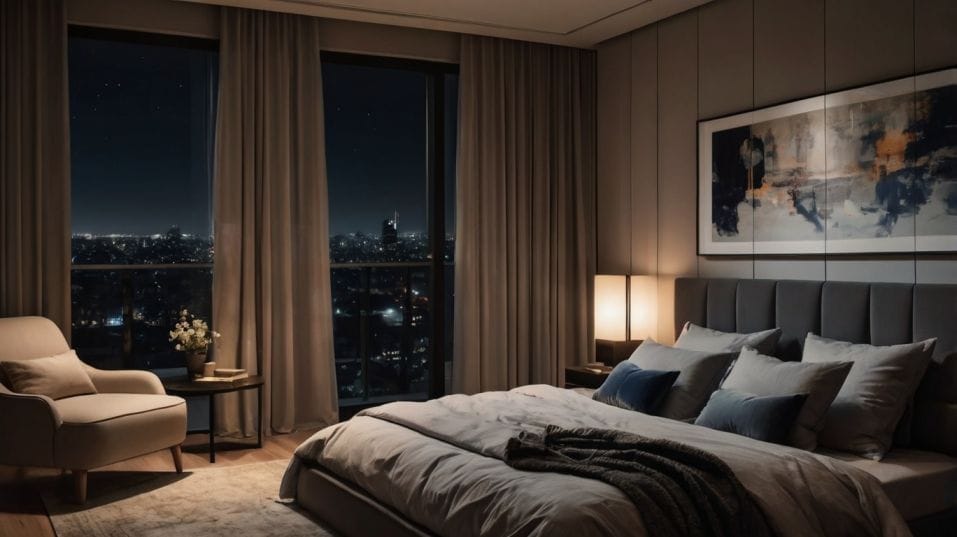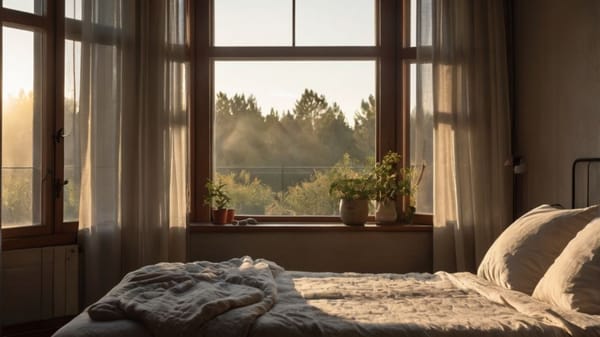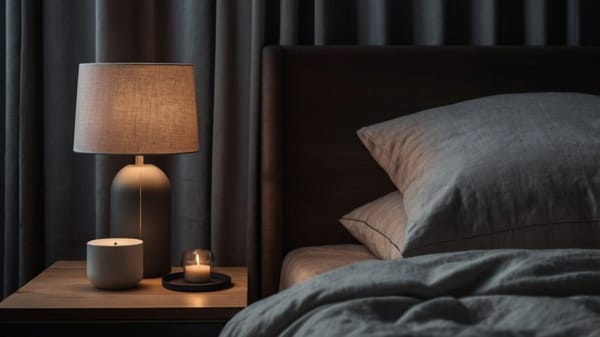How to Maximize Sleep Quality on High-Stress Days
Struggling to sleep after high-stress days? Learn science-backed strategies to calm your body and brain for deeper, faster, better rest—tonight.

Ever lie in bed, wiped out but wide awake, wondering why your brain won’t shut off? You’re not alone—and it’s not just stress keeping you up.
It’s your body missing the right cues. Good sleep isn’t a reward for calm days—it’s your secret weapon to survive the chaotic ones.
The key is knowing how to steer your system toward rest, even when everything else feels out of control. Here’s how to make that happen, starting tonight.
Engineer a Wind-Down Routine That Actually Works
Your evening needs structure. Not in a rigid, perfectionist way—but in a way that creates a consistent cue for your nervous system: “It’s time to let go.”
Stress keeps your cortisol levels high, which blocks melatonin—your sleep hormone—from doing its job. To turn that around, your brain needs a shift in environment, not just the passing of time.
Start with light. Bright overhead lighting after sunset sends the wrong message to your brain. Use table lamps, warm-tone bulbs, or even smart lighting that dims gradually.
Block blue light from phones, laptops, and TVs—either by using night shift modes or just shutting them down 60 minutes before bed.
Create a “nothing” buffer. This is the stretch of time where you’re not answering emails, scrolling social, or multitasking.
You’re off the clock—mentally and physically. Think of it like a cooldown after a hard workout. Even 20 minutes of intentional unwinding can make a huge difference.

Try:
- Listening to calming music or white noise
- Taking a warm (not hot) shower
- Reading something light—but not on a screen
- Doing a repetitive, non-stimulating task like folding laundry
The goal isn’t to sedate yourself. It’s to give your brain a predictable path to stillness.
Move With the Clock, Not Against It
Exercise helps regulate your sleep—but only when you time it right. On high-stress days, your nervous system is already stuck in high gear.
Late-night workouts, especially high-intensity ones, pour gasoline on that fire. They raise adrenaline, core temperature, and heart rate—making it harder to wind down later.
Move Earlier to Sleep Deeper
Instead, anchor movement earlier in the day. A morning workout helps stabilize your circadian rhythm and offsets cortisol spikes.
Afternoon movement is great too, especially for stress relief. Even a 20-minute walk after lunch lowers cortisol and helps you sleep deeper that night.
If you’re too wiped out for a full workout, don’t skip movement altogether. Do light stretching, yoga, or breath-focused mobility work in the evening.
These activities activate your parasympathetic nervous system—the one that tells your body to relax and recover.
Bonus: moving your body earlier means you don’t have to “burn off” stress at 9:30 p.m. when you should be drifting toward rest.
Eat for Recovery, Not Stimulation
What you eat—and when—can seriously impact your sleep architecture. Stress alters digestion, blood sugar, and hunger hormones, which means your usual eating patterns might not serve you on chaotic days.
Cut Stimulants, Fuel Sleep
First, caffeine. Even if you think you’re not sensitive, it’s messing with your sleep if you’re drinking it past mid-afternoon.
Caffeine has a half-life of 5–7 hours, so that 3 p.m. pick-me-up is still active when you’re trying to fall asleep. Cut it off by 2 p.m. or earlier.
Next, evening meals. Heavy, high-fat dinners make your body work overtime to digest when it should be winding down.
Instead, aim for meals that are protein-rich but easy to process—think baked salmon, quinoa, sautéed greens, or roasted sweet potatoes.
Carbs aren’t the enemy here. In fact, moderate complex carbs in your dinner help with tryptophan transport (a precursor to serotonin and melatonin).
That’s why a small bowl of oatmeal or a banana with almond butter can actually help you sleep, not hurt it.
If you're hungry close to bedtime, ignore the "no food after 8 p.m." myths. What matters more is the type of snack:
- Tart cherry juice: naturally high in melatonin
- Kiwi: studies link it to better sleep latency and duration
- A small amount of yogurt or protein: helps stabilize blood sugar
You're not feeding cravings. You’re fueling recovery.
Get Your Mind Out of the Spin Cycle
Overthinking is one of the biggest barriers to sleep. And ironically, the more you try to stop thinking, the more intense the spiral gets. Here’s a better strategy: give your brain something low-effort to focus on.
Offload, Then Slow Down
Start with a mind dump. Use a notebook—not your phone—and jot down everything buzzing in your head. Tasks, worries, reminders, ideas.
Don’t organize it. Just unload. You’re giving your brain permission to not hold onto everything all night.
Follow it up with a basic breathing exercise. No need for incense or mantras. Just inhale for four seconds, hold for four, exhale for six. Do that for a few minutes while lying down. You’ll feel your heart rate drop and your body start to slow.
Another simple option: guided audio. Apps like Calm or Insight Timer offer sleep-focused meditations, but even a boring podcast or ambient nature track can do the trick.
The goal is to crowd out intrusive thoughts with something neutral and consistent. You’re not forcing sleep—you’re removing the friction that’s blocking it.
Turn Your Bedroom Into a Sleep-Only Zone
Sleep hygiene sounds clinical, but it’s really about one thing: creating a space that makes your body want to rest.
Your bedroom should be dark, quiet, and cool. Most people sleep best between 60 and 67°F.
If that’s not possible, use a fan, open a window, or invest in breathable bedding. Heat is a sleep killer, especially for deep, restorative stages like slow-wave sleep.
Lightproof the room as much as you can. Streetlights, hallway light, or a glowing clock can all interfere with melatonin production.
Blackout curtains are a worthy upgrade. If you travel a lot, bring an eye mask and earplugs to create consistency wherever you are.
Also: get the tech out. No scrolling in bed, no doomscrolling through news, no checking emails “one last time.”
The bed is for sleep, period. Even if you don’t fall asleep right away, lying there in a screen-free, calm space trains your brain to associate the bed with rest.
Over time, this builds a powerful feedback loop: enter bed, feel tired, fall asleep faster.
Final Thoughts
Stress doesn’t have to wreck your sleep. You just need to stop relying on willpower and start using strategies that actually work with your biology.
Build a wind-down routine that signals the end of your day. Move with intention, not intensity. Eat in a way that fuels sleep instead of fighting it.
Give your brain a soft off-ramp instead of spinning the tires in bed. And set up your room so it invites deep rest without distraction.
Start tonight. Pick one small change. Cut the lights. Do the brain dump. Swap your scroll for stillness. You’ll feel the difference tomorrow—and build the momentum to keep going.
Because once you learn to sleep well, even on your worst days, everything else starts getting easier.




